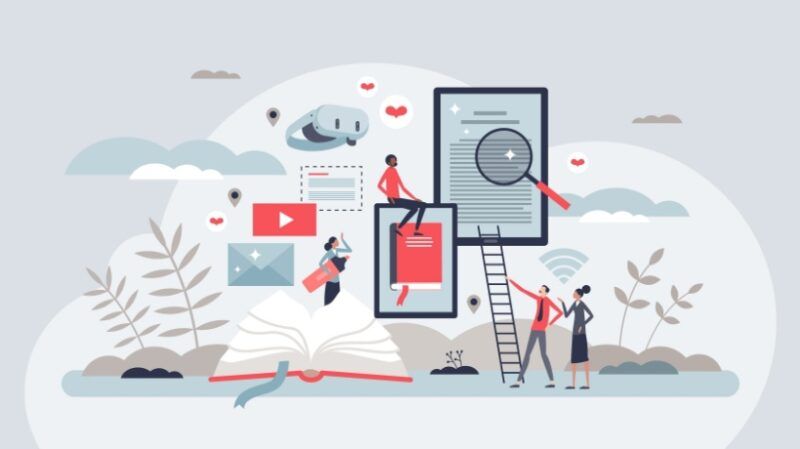

The Key To Building A Future-Ready Workforce
Picture this: A global tech company launches a significant software update, and its success hinges on how quickly employees across the globe can adapt. In situations like this, traditional, static training methods often fall short. Adaptive learning, however, offers a personalized training approach that helps employees adjust faster and achieve better results. In today’s workplace, where agility is key, adaptive learning is transforming how companies bridge the gap between evolving demands and employee capabilities.
What Is Adaptive Learning?
Adaptive learning uses technology to create personalized training experiences. By analyzing individual learner data—such as progress, performance, and engagement—it tailors content to meet the unique needs of each employee. Think of it like a GPS for learning: it identifies your starting point, highlights the best route, and helps you avoid unnecessary detours. This approach replaces the one-size-fits-all training model with dynamic, interactive learning paths that align with different learning styles and paces.
Why Adaptive Learning Matters
- Customized learning experiences
Every employee has unique skills and knowledge gaps. Adaptive learning meets employees where they are, providing content that is both relevant and appropriately challenging. - Real-time feedback
Adaptive systems offer immediate feedback, helping learners address mistakes and reinforce concepts as they go. This creates a more effective and efficient learning process. - Better engagement
Personalized training content keeps employees interested and motivated. Engaged learners are more likely to complete training programs and apply what they’ve learned in real-world scenarios. - Faster skill building
By focusing on specific knowledge gaps, adaptive learning speeds up skill development—a crucial advantage in industries where change is constant.
How To Implement Adaptive Learning For Personalized Training
To maximize the benefits of adaptive learning, a strategic approach is essential:
- Utilize data analytics
Adaptive learning depends on data. Choose platforms that can collect and analyze learner data to create tailored experiences while respecting privacy and compliance standards. - Integrate with current systems
Select adaptive tools that work seamlessly with your existing Learning Management System (LMS) or HR platforms, ensuring a smooth transition and cohesive training experience. - Prioritize User Experience
A user-friendly design encourages adoption. Employees should find the platform intuitive and straightforward to navigate. - Start with a pilot
Launch a pilot program with measurable objectives to assess effectiveness before scaling across the organization.
Where Adaptive Learning Shines
1. Onboarding New Hires
Starting a new job can be overwhelming. Adaptive learning platforms identify each new hire’s strengths and gaps, tailoring onboarding materials to make them productive faster. For instance, a new marketing hire might focus on branding guidelines, while a sales rep learns about the CRM system.
2. Upskilling And Reskilling Employees
As job roles evolve, employees need to stay relevant. Adaptive learning ensures they develop the right skills without wasting time on unnecessary content. This is especially valuable in fast-changing industries like tech.
3. Compliance Training
Regulations often vary by role and location. Adaptive learning delivers training specific to each employee’s compliance requirements, reducing risk and improving accountability.
Challenges To Consider In Personalized Training
While adaptive learning offers significant advantages, it’s not without its challenges:
- Initial costs
Investing in adaptive learning technology can be expensive up front, but the long-term benefits often outweigh the initial expense. - Data quality
Adaptive systems rely on accurate data. Ensure your inputs are reliable and truly reflect employee needs. - Cultural buy-in
Shifting to adaptive learning requires support from leadership and clear communication about its benefits.
The Future Of Adaptive Learning And Personalized Training
With advances in Artificial Intelligence (AI) and Machine Learning, adaptive learning platforms will become even smarter. Future systems might predict the skills employees will need based on industry trends, delivering training before gaps arise. Virtual and Augmented Reality could also play a role, offering immersive, engaging learning experiences.
Organizations that embrace adaptive learning now will set themselves apart as leaders in innovation and workforce development. By fostering a culture of continuous improvement, they’ll ensure their teams are ready for whatever comes next.
Conclusion
Adaptive learning isn’t just a buzzword—it’s a powerful tool for driving employee performance and engagement. By tailoring training to individual needs, it helps organizations build a more agile and capable workforce.
For organizations, the implications are clear: those that prioritize adaptive learning gain a competitive edge. They can respond to market changes faster, upskill their workforce with precision, and ensure compliance with evolving regulations—all while optimizing training costs. As industries across the board face increasing disruption, adaptive learning serves as a strategic advantage that drives both immediate and long-term results.